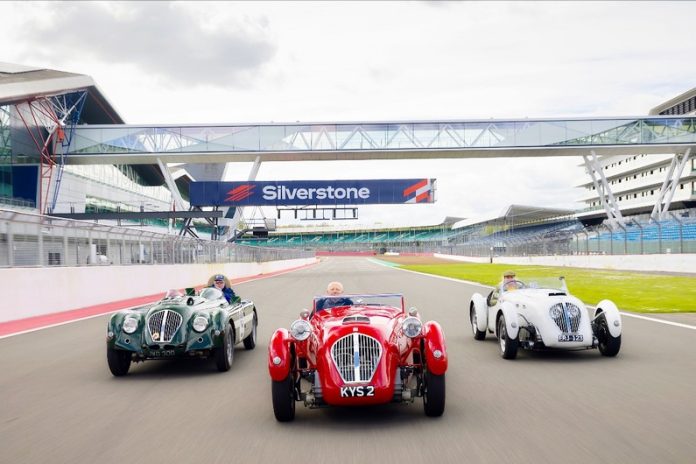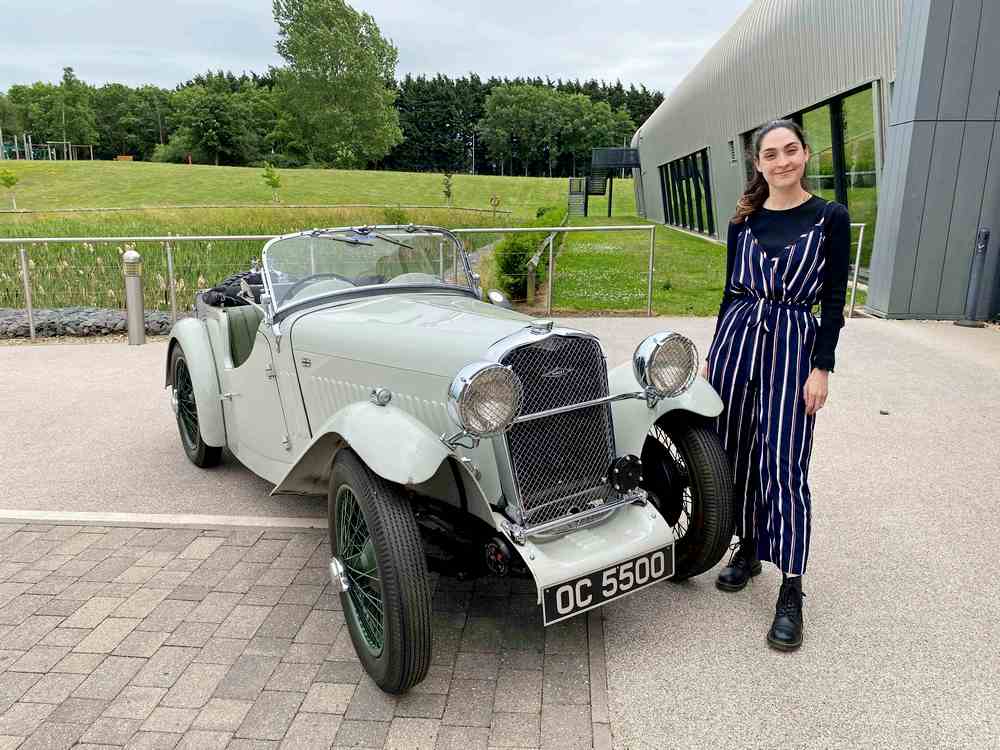If you haven’ read the first part here is the link –
Part Two “It’s still got the standard two inch (HS8) carburettors on it. I did seriously think about putting it onto triple HS6s. I’ve got the inlet manifold for it, but, I don’t think there is any point really, because I don’t compete with it now and you can’t tear about on the roads. It’s great fun though. I suppose one thing I ought to mention is that, I actually proposed to my wife while driving it. [Laughs]. She comes from West Yorkshire, Wakefield. Her first job was at a firm in Wakefield and so she and another girl used to go for a walk at lunchtime. There was a lad around the corner, who I think they were all interested in, he had an Austin Healey. She used to think how wonderful it was and, how lovely it sounded. Little did she know she’d end up with, not only somebody who’d got one, but somebody who has got one for life. [Laughs] Let me just look at some more photographs as it might remind me of something else.” Interviewer: Well, I think the most interesting thing about this interview, compared to an interview with any other owner of an Austin Healey, is the fact that you’ve had it for such a long time. That’s almost incredible. All the modifications that you’ve done over that period and the use that you’ve made of it, in competitions, as well. “Yes. As I say, it’s been to, Hill Climb wise, it’s been to Prescott, Shelsley, Loton Park where I won a couple of pots there. It’s been to the Onchan Hill Climb in the Isle of Man and it’s been to Harewood.” That’s a shot taken on one of our Classic runs. You see there’s my Healey and the green and cream one, belongs to the brother of the dark blue AC Ace you saw in the earlier picture, so, they usually turn up either in the Ace or the Healey. And there’s …  Interviewer: It looks like a Rolls Royce at the very back. Yes, and an Austin Healey 100/4 at the end there. Now, of course, one of the wonders of digital cameras, which I think is marvellous, is, if you were taking anything to pieces, particularly if you are taking the engine out in this case, and you are not sure how to put it back together again, you just take a quick digital photograph and it’s marvellous, as to which wire goes on where. Oh, now, that was the Healey’s companion for nine years, the MGB. I mentioned earlier that I used to be, rather dismissive of MGBs. After twenty-odd years, we had sold the Scimitar Coupé; we were down in Cornwall, on holiday and there is a firm called Westcountry Classics, just between Helston and Penzance, we drove past and saw this MGB. It looked very clean. Because we did these road runs where you have a ‘Tulip’ route map to follow (Liz isn’t a good map reader, she doesn’t like doing it, so I said, “Well, you drive and I’ll navigate”). She said, “I can’t drive the Healey”. She has driven it, but because she is short, with the seat so far forward, the gear stick was behind and the steering was so heavy, so, I said “Well, let’s get a car with lighter steering”. The first thought was an MGA, but we were about a year too late, the prices had started rocketing. So, when we saw the MGB which was a ’66 model, all the stuff was there, and the price was appropriate. We thought that would be a good alternative. Liz had a go in it and I said, “Well, try the steering” because MGB steering is heavier than the Healey’s is.” 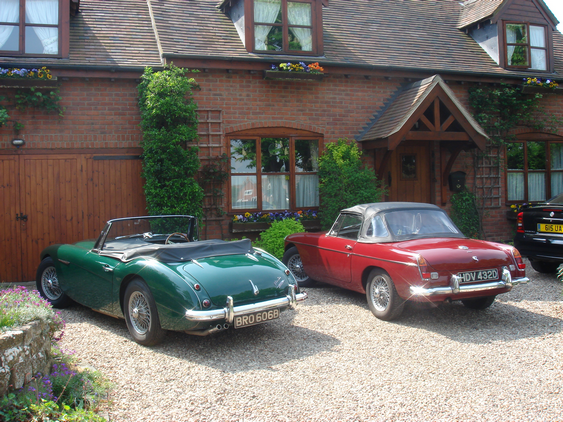 “Which is ridiculous considering the weight that the Healey has got at the front end. But, because it’s rack and pinion, of course, you haven’t got so much mechanical advantage perhaps, but it’s more sensitive. I mean, Healey steering is not anything to write home about, the MGB steering is more sensitive, but it is heavy. Anyway, I have to say that I did enjoy driving it. Its performance is useless compared to the Healey, but, you can go round corners as if it’s on rails, which you can’t do with such gay abandon with a Healey. Healey handling is very, very safe. Oh, what I haven’t I mentioned, is that I have done quite a few Classic rallies in it as well and on those, when trying, I found, that if you go down a dip, fast, which has got the camber the wrong way, you suddenly feel a very odd sensation, that you are not in contact with anything. It’s only happened to me twice, both on rallies, and on both occasions I thought, I mustn’t touch anything, I mustn’t brake, or steer, ride through the dip and as it starts to go up again, everything comes back to normal. I haven’t managed to explain it to myself yet, as to what that is, but, it’s a very, very unnerving feeling and I haven’t come across another Healey driver that has experienced this sensation. You feel as if you are about to spin off into the scenery. But nothing does actually happen. The car doesn’t change direction, but, apart from that, I think the Healey handling is very safe. You can hang the tail out with great abandon, in fact, I actually got a round of applause from the spectators when I did the Morecambe Illuminations Rally in it and one of the tests was four bollards on an army camp parade ground. You came in, and you had to do a three-sixty round each bollard and I managed to go “woo, woo, woo, woo” round each one. In a Healey it’s fine, you just throw the car in unstick the back end, floor it, so it continues to slide. I think one thing that’s worth commenting on as well, is the reliability of the car. Having said that, something will probably go wrong…..” Interviewer: So, have you still got the MGB? “No, we sold that. We bought it in 2006 and sold it in 2015. Then I bought a Porsche Cayman, because Liz gets a bit upset with having her hair blowing round if we are going places, so, if we got a closed car then she can’t complain. [Laughs]” Interviewer: From the ridiculous to the sublime. “Yes, so, that, sort of, brings me to think about anything else that’s gone on in the time I’ve had the Healey. We had one peculiar one when we lived in Derbyshire, when we were going down to visit my parents and the prop shaft seized up. It started making the most horrible noise, which I thought was coming from within the gearbox. Turned out not to be the case, but …” I: There are two joints. One behind the gearbox and one in front of the diff. “That’s right. It was the one in front of the diff that had actually failed, transferring the noise up through the gearbox. I had a friend tow me back up to Derbyshire and thinking I was going to have to take the gearbox out, because the first thing you’ve got to do is take the prop shaft off and it was seized solid. Instead of an expected gearbox rebuild all that was needed was a new UJ kit. The other thing is this, which is a known Healey problem when anno domini strikes. That is the front damper mounting at the top of the wishbone fractures producing negative camber. Fortunately, I had only gone to a meeting in Stratford when it happened, so, I just drove back very, very, slowly. I knew what had probably happened, because I had read an article in the Thoroughbred and Classic Car Magazine around the time of me first buying the car. One of the editorial staff, Paul Skilleter, well known now for his association with Jaguar, had a ’66 AH 3000 Mark III. He wrote about his experience of driving along the Bedworth bypass, near Nuneaton, when the front suspension suddenly collapsed. He wrote that this was a heart-stopping moment for him. In my case, what had happened was, the turret had actually corroded around one of the captive nuts. This put strain on the other bolts and caused the flange on the shock absorber to fail. In extreme cases this requires the whole turret to be replaced. This is a big job which requires the engine to be removed. But in my case Peter Holdsworth did a “cut and shut” job to provide a platform for the replacement captive nut. What Peter did was to, with a laser cutter, cut out the side of the turret and bent it up so that we could get inside. Welded up the top plate and then we put a big block of steel in with a thread tapped in, and then folded the side back down again, so it’s nice and solid now.” Interviewer: That sounds like the kind of thing that maybe I would do. A purist might say, “Ah, that makes it non-standard in that regard”. “But you can’t see it once you’ve welded it all together and painted it.” Interviewer: No. That’s right, you’d have to strip it right down to know that. And I won’t be telling anybody. [Both laugh] “It was never a BMC designation, but people talk about 3000 Mark III phase one and phase two and in fact, there are actually two splits of the phase two, because the phase one is like mine. You’ve got the single Lucas white light flashing indicator and sidelight, with a Mark II chassis. Then the proper Mark III chassis comes in, which means you’ve got leading links onto the rear axle introduced, because, they took a leaf out of the springs. Then they found you got axle tramp, so they put tramp bars on. They changed the lights on the front to the bigger Lucas plastic lens, but it was still a single lens. Then, they modified the front panel so that you had a separate lens with a yellow flasher as well. And at the back, you had a yellow flasher introduced. I am seriously thinking about fitting those lights to my car because the current arrangement with flashing red turn indicators is quite dangerous. I’ve twice, in recent years, almost had somebody run into the back of me because they don’t expect to see a brake light come on and then the brake light start to flash indicating that the car is going to turn. Looking at another photograph – This reminds me, because the car has all its original main components, so, the gearbox is M1220 as you can see there. The axle is the original axle. 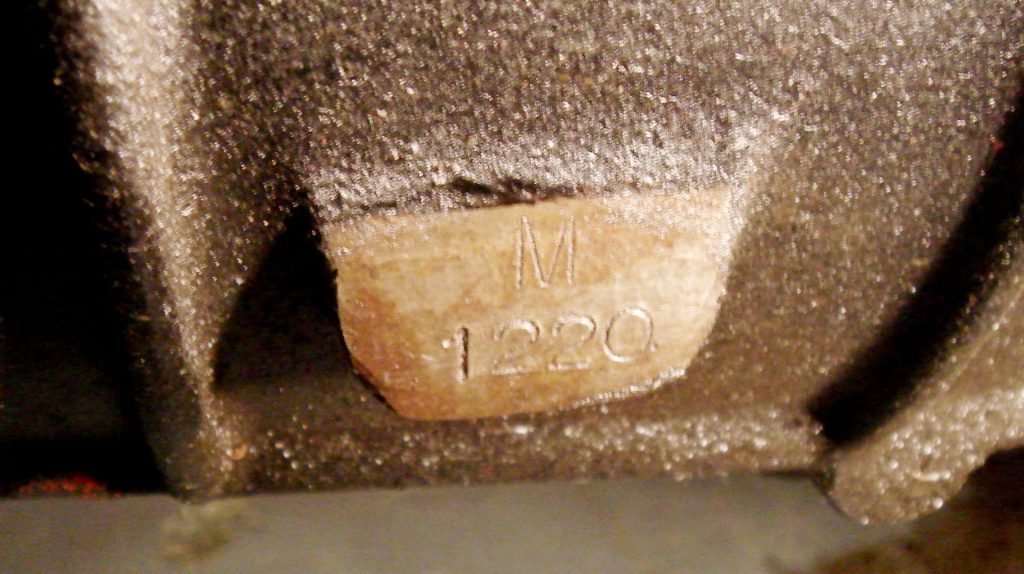 This is a reminder of a difficult time. While the car was at Holdsworths having its bodywork done with a full respray, I was in America and I got an email message from my secretary saying this chap wants to speak to you. I phoned him and he said, “We’ve got a problem; we’ve taken the front wings off the car and when we started the car up, there was water spraying out of the head gasket.” Interviewer: And they hadn’t done anything with the engine? “No they hadn’t touched it. But I had had a hose go, only about two miles from home, which had meant me running for a while with a high temperature before arriving home. Maybe it had squeezed the head gasket a bit. Anyway, for whatever reason, there was water spraying out. So, he said do you want us to take the head off and put a new head gasket on?” So, I said, “Yes, please do it while it is easy for you to get at it”. Normally I don’t like anybody else to touch the engine. I got the car back and after some time, found I was getting oil in the header tank. I mentioned this to Peter Holdsworth who said “Oh, you’ve got one of those, have you?”. Some of the C-series blocks, now they are over 50 years old, are beginning to show porosity, because the water leeches the graphite flakes out of the cast iron. I had heard of a company who could do what we call ceramic sealing of the block but I put up with the problem for two years, just skimming the oil off the header tank. But it was annoying me, so I thought I need to get this fixed. I took the engine out, stripped it out and took it to the firm for sealing. I thought, I don’t believe this can work because it’s the oil that’s under pressure in the cylinder block, then due to the porosity it gets into the water jacket. So, if you seal the water side, it’s the wrong way. Oil is going to be trying to push the ceramic sealer off the cast-iron. What they do is clean the block religiously, I suppose it is a mild caustic soda solution, something to get all the corrosion out. Then they put the block onto a bench jig and pump the ceramic solution through it for about two hours under pressure at about 200 degrees centigrade. They then stop the stuff flowing through the block, drain it off and the residual heat bakes the ceramic sealant. I also asked the firm to machine down the piston skirts a little as they were unnecessarily long, weight match them and balance the crankshaft, clutch etc as well: the C-series is not a particularly smooth engine, despite being a six-cylinder. Not like the Triumph 6 that was in the Vitesse, so I thought this will be worth doing while it’s in bits. I got the block and parts back, rebuilt the engine, fired it up and felt very pleased with myself with the engine running better than ever. But after six months, oil began to appear in the header tank again! I put up with that for, I don’t know, a year or so before taking the engine out again. Because this was now a recognised problem, Southern Carburettors down at Crawley had created a kit, where instead of ceramic sealing, you bore the porous oil ways out and Loctite in stainless-steel sleeves to close off the porous cast-iron. I thought, right …” Interviewer: So it’s only one oilway … “No, it’s two they do. The kit is for a sleeve going down from the block’s cylinder head face down to the main oilway and then you also have to do the cross-drilling to the main bearing saddle and to get that in you have to bore a bigger hole in the side of the block for which they drill and tap for a larger hexagon plug. The kit they supplied includes the two stainless-steel sleeves, the new hex plug and copper washer and two long-series drills to bore out the oilways.” Interviewer: How did you get this work done? “I needed to find a quality engine machinist, so, I thought that down at the bottom of our (village) green is a member of the Vintage Sports Car Club who’s got several vintage cars. I asked him “who do you use for engine work?” he said, “Don’t go to anybody else but Coventry Metalling & Boring – they are absolutely excellent”. So I went to them and got them to do this drilling job and I said “Please pressure test the block before I have it back” and it turned out they had pressure-tested it before the work and couldn’t find any leaks in it, which was interesting. Anyway, I witnessed the pressure test afterwards and it was fine, no leak at all. 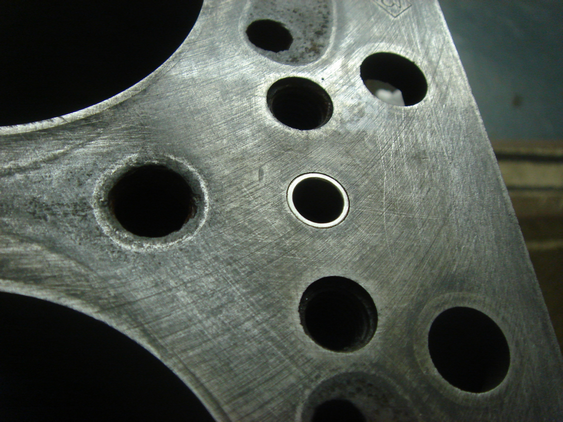 So this is the block after putting the sleeves in the oil ways. When someone else does buy the car, I can tell them they will never have porosity problems with it. I got the block back, rebuilt the engine again, fired the engine up, and, feeling very pleased with myself, drove into Stratford to get some petrol, came back, dipped the oil to find it full of water – it was like mayonnaise. After I finished swearing, I had to figure out what was wrong: I knew it wasn’t the block as I’d seen it pressure-tested so it had to be the head or the head gasket. I took the head off again and checked it for flatness with a straight-edge: the C-series head is pretty good. A lot of six-cylinder heads warp over the years as they are quite long, and the cooling water tends to cool the front more than the back giving uneven cooling distribution. Anyway, it was fine to within three thou’ so I then checked the block which was also okay to within three or four thou’, certainly what the gasket could accommodate. I then made up a little jig to pressure test the drilling through the head that feeds oil from the block to the rockers and took it right up to 80 psi: nothing, it was tight as a drum. So, I thought to myself it has to be the head gasket that can’t have been sealing properly. Close inspection of the head and block faces showed that there is enough freedom of movement of a new head gasket around the head studs for the ‘eyebrow’ water transfer eyelets to sit on rough areas of corrosion and possibly not seal properly. To be sure, I had the head lightly skimmed to clean off any trace of corrosion while I emery-papered the whole top face of the block to achieve a similar result and then refitted the head.” Interviewer: So, when you replaced the gasket it cured it, did it? Success, total oil and water tightness which is how it is to this day! While I had had the engine in pieces the previous time, I made a point of photographing any serial numbers I found, and this shows the marking on the sump face of the block. It is stamped 64, 27, 84. Whether 64 is the year of manufacture (because that’s the year the car was made) I’ve not found anybody who knows that. 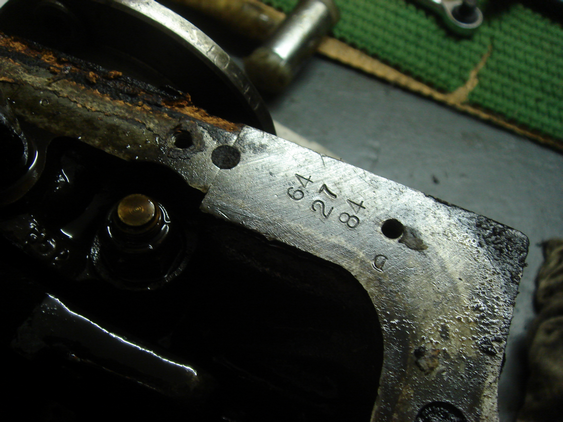 Now this is an absolute Healey mystery this. When I had the head off at some stage to put in new valves and guides, when I was hill climbing, I found that some exhaust valves seats were cracked; they wouldn’t clean up with lapping. I mentioned it to one of the Bradburn brothers who was hill climbing a Mark II AH 3000 and he said ”I’ve got a spare head in the stores at work”. I asked, “Well don’t you want it?”: he replied that he was going to sell the car fairly soon. I found out that Mr Bradburn (Senior) used to get a new Austin Westminster every year as a BMC Agent but thought they were a bit gutless so had bought a Healey head, carburettors and exhaust manifolds to warm it up. Each time he got a new Westminster, the workshop would fit the Healey parts. They were swapped from car to car until he eventually told Lord Stokes where to stuff his dealership and went over to Nissan. The head was still in the stores although the carburettors had gone, sold to someone else. So, I’d got this head which has got the strange casting mark on it of 1923J7.  Now if you look at every normal Healey head, it has an ‘AEC’ part number cast into it; this one doesn’t, and nobody knows where it is from. I’ve even asked Bill Price (former manager of BMC Competitions at Abingdon) about it but he didn’t have an answer. Somebody made a suggestion to me that maybe it’s a police head; apparently the police also used to hot up their Westminsters so maybe they commissioned Special Tuning or somebody else to make special heads for them. I’ve still got the original head which is repairable but will probably cost eight hundred quid to cut new valve seats.” Interviewer: So you replaced your damaged head with this one? “Yes, I replaced it with that head and that’s what it’s still got on. That’s a bit of a funny one as AEC was the standard prefix for BMC part numbers. The next photo shows the engine number 29K/RU/H1281. 29 is 2.9 litres in BMC speak (remember despite being called a 3000, it is actually a 2.9), K is the alphabetical update sequence having started at A (K is the last), R indicates overdrive and U stands for centre-change gearbox. H is for high compression and 1281 is the actual serial number. Unfortunately, that label is getting tatty, I’ll probably have to replace it one of these days but I’ll obviously keep the original.  Oh, that’s another weakness with Healeys. The handbrake. I don’t know whether it happens on the others but on the Mark III, you’ve got such leverage on it, it pulls the mounting bracket out of the chassis. I had re-welded mine once, to the original design, but it pulled out again so it’s obviously not a very good design. I have now made up an additional stiffening bracket which I welded to the chassis. What I have done is to extend it well forward, right up to here, with a bracing piece on it and I am much more careful now when pulling it up. 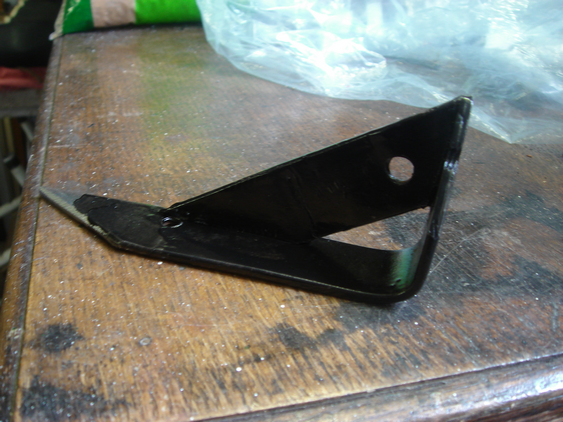 These photos show some markings that appear on the bodies which Steve Byers in the States is beginning to record. The first photo shows ‘F290’ stamped on the bonnet hinge but I found the same number also chalked on the transmission tunnel; Steve advised that the boot lid stay bracket can also be stamped the same but I had a new boot lid some years ago so cannot check mine. These were obviously put on by Jensen during the body building phase.  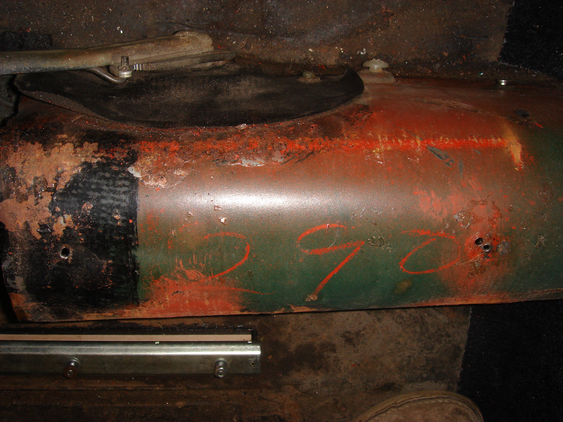 Ah, this is worth, just a little bit of fun here. On May the 21st 2014, the car was fifty years old. So, we went down to the pub just for a bit of fun and to raise a pint to it. And we’d only been there about ten minutes when the Morris Men arrived. [Both laugh]. 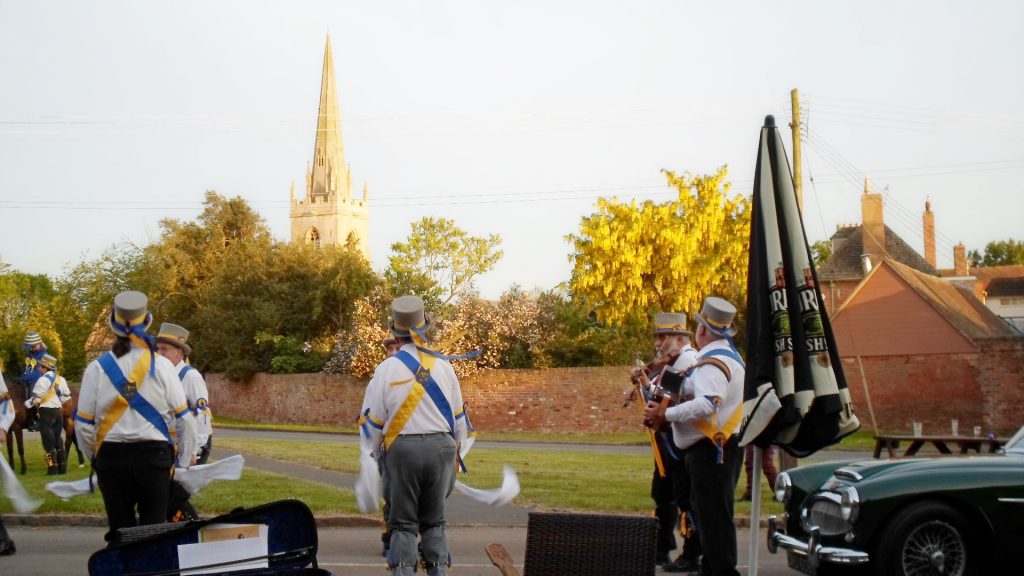 Interviewer: So, that really made it an occasion. “Yes, that’s right. That was just a bit of fun.” Interviewer: David, it’s been absolutely fascinating and particularly the last part of the story about the WSM 3000**, and I’m certainly going to follow up on that. So, thank you very much indeed for the time you’ve spared … “You are most welcome.” An unexpected Conclusion Earlier this year David realised that he was finding it physically more difficult to carry out the “hands – on” maintenance on ‘BRO’ which was a major part of the enjoyment in owning the car. So, he did something that at one time he didn’t think that he would ever do while he was still able to drive – he decided to sell the car. It fetched a very reasonable price at the Classic Car Auctions September Sale, see the link below. Strangest of all it was bought by the car’s second owner from more than fifty years ago!!
** Note The story of how David helped to unearth the abandoned WSM 3000 GT has been omitted from this modified transcript. Part of the story was told in an edition of a carsceneinternational.com Healey Bulletin. I hope to be able to bring that story right up to date in a future Car Scene post. Links – Murray Scott – Nelson Austin Healey Restorers – https://murrayscott-nelson.com/ Thenford Arboretum – http://thenfordarboretum.com/ Classic Car Auctions – https://www.classiccarauctions.co.uk/events/2020-auctions/cca-september-live-online-auction-2020/cca-september-live-online-auction-2020/classic-car-sale-19th-september-2020-from-11am Nick © carsceneinternational.com
A New Opportunity Over the years I have built up an archive of photos of classic cars that I have taken at various events in the U.K. and USA. I am now making them available to other Classic Car enthusiasts but especially as a means of encouraging the younger generation to take an interest in this subject. There will be a modest charge made to cover production and administration costs. Click on this link for further details – https://www.carsceneinternational.com/carscene-classic-cars-digital-images-introduction-pricing/ |



